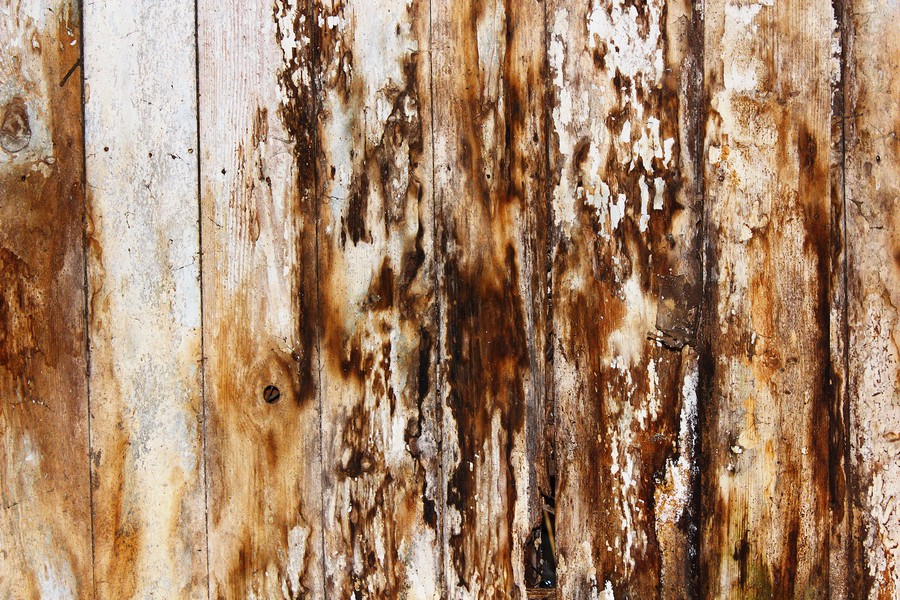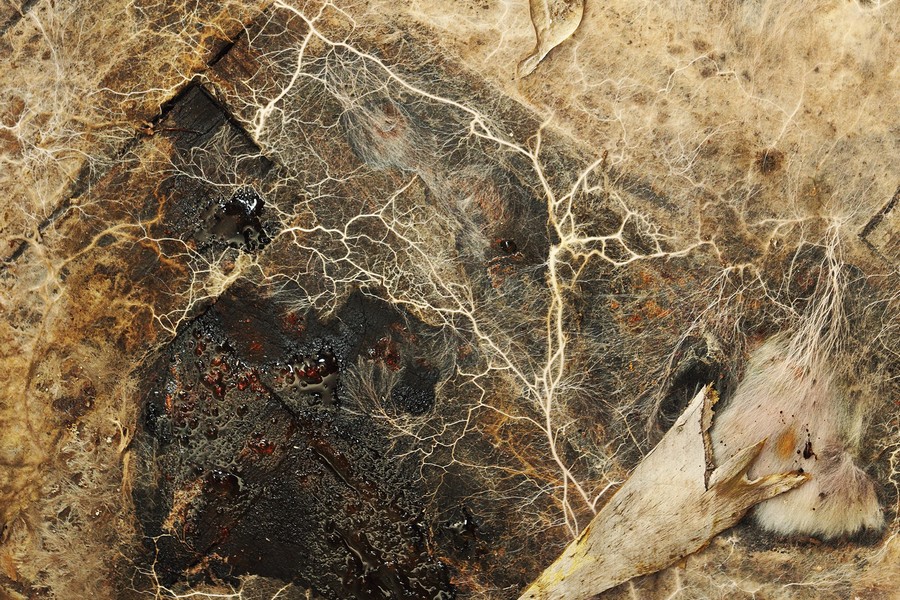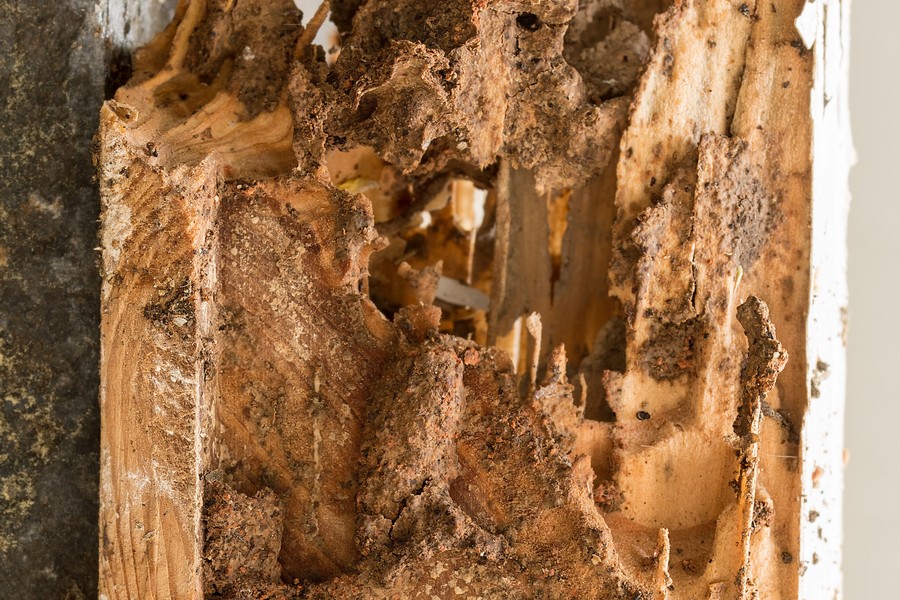Contact Brighton Damp Treatments Now to Speak With an Expert.

In the UK, thousands of households have been afflicted by damp. Research indicates 4% of England’s 23-million dwellings are suffering from rising damp or other forms of moisture in one or more rooms.
The UK’s wet and chilly climate contributes to timber decay, but the kind of building materials also matters. Older homes may be more prone to dampness, yet it can affect new constructions as well.
Inhabiting a moist house is not only uncomfortable, but can also be hazardous to your wellbeing. Mould development may lead to diverse signs, such as clogged noses, wheezing and soreness of the eyes or skin. Moisture buildup in dwellings is risky for kids, seniors and those with respiratory or dermal issues.
The principal cause of wood decay is an excess of moisture in buildings and structures, providing an ideal environment for rot fungus to flourish.
Fungi are categorised into two varieties: wet and dry rot. Wet rot necessitates a higher humidity level to survive; it flourishes on wood with fifty percent or greater moisture, while dry rot requires twenty to thirty percent.
There are many kinds of wet rot fungi, but only one type of dry rot fungus. Knowing the difference between them is the first step in effectively eradicating the rot problem.

Wet rot, as its moniker suggests, necessitates a higher moisture content in wood than dry rot. It germinates when the humidity of timber or other absorbent surfaces reaches around 50%, while even 20% is enough for dry rot to proliferate. Generally, external seepages or water incursions from guttering, downpipes, stone pointing and plumbing supply the requisite high levels of dampness for wet rot’s proliferation.
To prevent a return of wet rot, the building should be checked and any leaks fixed before tackling the rot. Once dryness is restored, wet rot will cease to develop. In most cases, the timber in the damaged region must also be substituted.

As previously noted, dry rot needs around 20% moisture content in wood to begin developing. Contrary to its name, it does not thrive in arid conditions.
In humid places, dry rot is common. An early indication of this issue can be condensation on windows. To avoid moisture accumulation, ensure your home has enough ventilation if you live in a damp environment.
Moisture can enter your home through a leak or damp decay and must be identified and eliminated before treating any fungal growth.
Dry rot is frequently encountered behind walls or beneath flooring, unseen. Unless identified promptly, it can inflict serious damage to timber and spread throughout the residence.
A surveyor should be consulted to determine the full extent of dry rot damage, and it is likely that plastering will have to be removed for closer inspection. Subsequently, any susceptible wood needs replacing just as if it was wet rot.
Contact Brighton Damp Treatments Now to Speak With an Expert.
Dry rot is a serious matter which needs to be addressed immediately. It is an insidious form of decay that spreads from the source of moisture and devours wood as well as other construction materials.
Wet rot fungus is more common than dry rot, though it affects a smaller area. Generally, the timber closest to the source of moisture deteriorates first. Nonetheless, wet rot should not be disregarded as if left untreated it can result in serious structural damage.
The fungus Serpula Lacrymans causes dry rot, the most destructive form of fungal decay in structures. It can spread quickly throughout a building and cause extensive damage. Any exposed timber with a moisture content higher than 20% is susceptible to attack – something easily achieved in any home.
Poor internal plumbing and penetrating moisture resulting from faulty render, guttering or downpipes can lead to wet and dry rot. This type of rot can cause substantial damage before a homeowner is even aware of the issue, as it may proliferate between wall coverings and beneath flooring.
On wood, a black mould may form.
The wood is likely to feel spongy and mushy when touched, due to discoloration.
If the rot has dried out, the wood will easily break and fall apart.
The paint may look in good condition on the front, but it could be decaying from behind, indicating the presence of wet rot fungus which will damage the finish.
Fissures traverse the timber, and white filaments (mycelium growth) are often present.
When the fungus is exposed to light, it acquires a lemony yellow tinge.
The wood will turn a deep brown hue and become brittle due to dry rot gnawing away at it.
Most of the time, the damage is limited to wood; however, in certain cases, large flat mushroom-like fruiting bodies can swiftly expand through coatings such as plaster or paint.
Dry rot is the most hazardous form of fungal decay in a property, as it quickly spreads and harms much of the wood. In comparison, wet rot fungus is more frequent yet not so severe; mainly appearing in areas where the wood stays moist.
Call Our Brighton Damp Experts team now for a free quote, consultation and advice.
Dry rot is one of the deadliest wood fungi, not only for your building’s structural soundness but also due to the dampness that it indicates. While dry rot does not cause health problems itself, it can lead to costly structural damage which could subsequently become a health hazard.
It is essential to differentiate between the two forms of rot, as if left neglected they can lead to substantial structural issues.
Moisture-loving fungi can damage wet wood, breaking down cell walls and consuming the nutrients. If left untreated, this can be a major hazard to your home’s construction as it will reduce the timber’s structural integrity.

As wet rot advances, the wood loses its strength and in certain cases can become very hazardous; not just for particular components of the property such as window frames, doorframes and ceilings but also possibly the entire timber structure of the building if left untreated.
If you think your house has wood rot, we’d be pleased to help. The earlier the issue is addressed, the less expensive it will be to repair. It’s wise to call in a surveyor if you suspect wet or dry rot. For advice and aid with wood rot, please get in touch with Brighton Damp Treatments on 01273 920588.
Dry rot is the most destructive of all building defects. It should be examined by an expert and addressed immediately to prevent further destruction.
To treat dry rot, the following steps should be taken:
1. identify the source of moisture;
2. remove any affected timber;
3. use fungicides to stop further spread.
Identifying the source of moisture is key when treating dry rot. Affected timber must then be removed before using fungicides to prevent further spread.
A qualified dry rot surveyor will inspect the property to identify the cause of dampness.
The surveyor furnishes precise particulars on how external blemishes or other elements are influencing the damp issue.
The technicians will remove all fungal decay on the wood.
Fungicide treatment for dry rot will be applied to the affected area.
To ensure better air circulation throughout the house and avoid dry rot, underfloor ventilation will be fitted.
To combat wet rot, these steps are suggested:
1. Locate the source of moisture
2. Remove and discard affected wood
3. Treat remaining wood with a fungicide
4. Allow for thorough drying
5. Replace any removed pieces.
A property care specialist must carry out a comprehensive inspection of the premises and identify the cause of dampness.
The surveyor will then explain what’s causing the moisture – whether it be penetrating damp or condensation.
Replace any timber affected by damp rot with fresh wood.
Subsequently, an application of wood hardener and preservative should be made to the surrounding area.
Brighton Damp Treatments provides a wide selection of products and brands. Every situation necessitates its own set of requirements, thus providing multiple treatments and repairs for rot damage.
Wood rot should be attended to by experts the moment any of the signs outlined above come to light. The issue will only worsen with time, increasing its threat potential to the house’s timber structure.
If you’re worried about wood rot, please get in touch with our expert team to arrange an inspection and get advice on the most cost-effective solutions.
Give us a call on 01273 920588 to arrange an assessment. Every situation is unique, so our surveyor will come to your place and discuss your needs in order to create an individualised quote.
Brighton Damp Treatments are specialists in damp proofing; we provide assessments, treatments and repairs for wood, walls, ceilings and floors. We serve commercial property owners, property management firms as well as residential clients.
Our rot treatment specialists will evaluate and gauge the intensity of the dampness in your residence. Our proficiency encompasses specialised damp and timber treatments as well as decaying timber repair, employing only the most effective techniques to resolve the issue.
Our professionals have been trained to the highest standards set by the Property Care Association (PCA), surpassing their expectations. Our surveyors are all Certified Surveyors in Remedial Treatment (CSRT) certified, assuring our clients of top-notch service.
Our services offer several advantages. These include: improved efficiency, cost savings, and enhanced customer satisfaction. Furthermore, our services can help you streamline operations and increase productivity. Additionally, you will benefit from reduced overhead expenses and greater profitability. Finally, our services provide an excellent return on your investment.


Max and his team have been at our property all week and I really can’t thank them enough for the fantastic job they’ve done on plastering both our walls and ceilings. They have literally transformed the appearance of our house! Not only has Ma…
From start to finish Max has been incredable. His knowledge lin damp proofing is second to none and his team where very clean and polite. The plastered finish was like glass so happy we choose Max Plastering for job.
Lovely bunch of lads left a very neat and clean job. Problem was solved.
Perfect Finnish and all left clean and tidy and no mess. Used Max previously and would not hesitate to ask him carry out more work.
Max, Harvey and Stuart arrived promptly as arranged. Done a great job on our outside rear wall. Work completed to a high standard, removal of all old material and cleaned up after themselves. I am so pleased with the standard of their work they ar…
They turned up on time and carried out the works in a very professional manor leaving the front of the house clean and tidy. Very impressed would definitely recommend.
I have to say that on every level Max (with Stuart and Harvey) did an extremely professional job! They explained what they were going to do, they were polite and courteous and respected that they were coming into our home. The plastering is of the…
I called max and he managed to come around the same day to do a survey. The next day I received an extremely detailed survey compared to any other damp proofer which made me feel very at ease that he was going to do the right job. Max and team tur…
Contact Brighton Damp Treatments Now to Speak With an Expert.